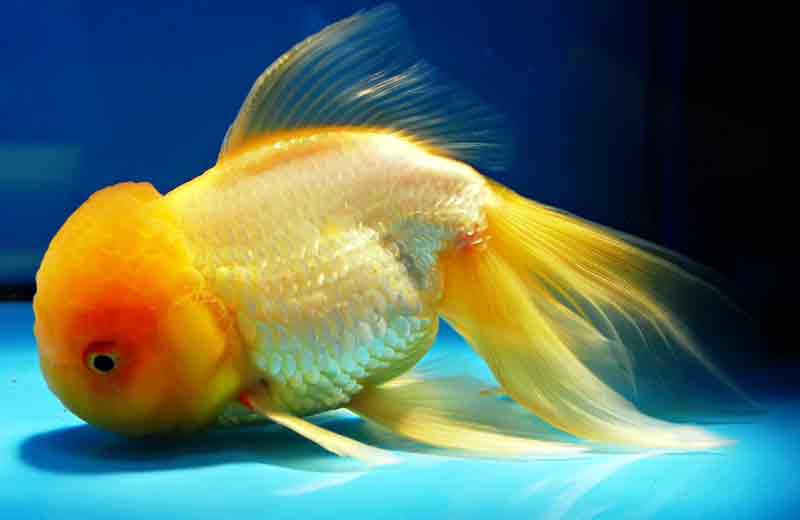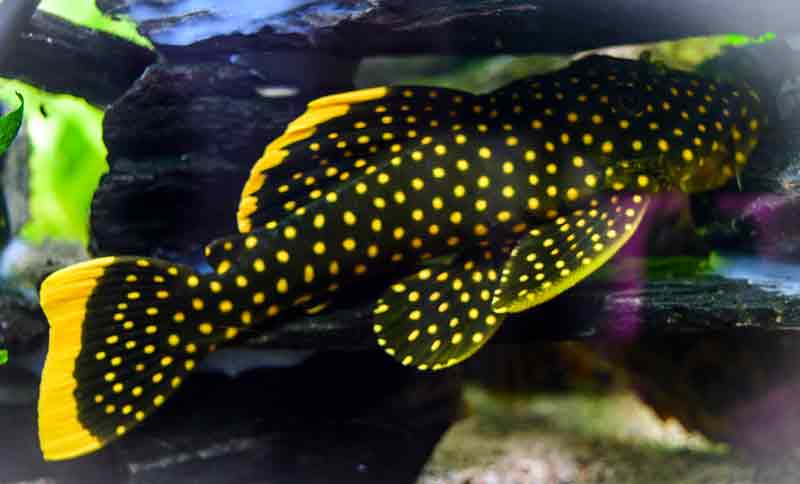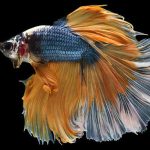What Is the Easiest Fish to Take Care Of? Maybe you are wondering about this, especially if you are new to ornamental fish. Certainly, you will be looking for fish that are hardy, and low maintenance, but still beautiful to look at.
Many different fish are easy to take care of, and the best option for you will depend on your personal preferences and the size of your tank. Some popular options for beginner fishkeepers include betta fish, goldfish, and guppies. These fish are relatively hardy and can tolerate a wide range of water conditions, making them easy to care for.
Additionally, they are available in a variety of colors and patterns, which can make them an attractive addition to your aquarium. As with any pet, it’s important to research the specific care requirements of the fish you are considering to ensure that you can provide a healthy and comfortable environment for them.
So, what is the easiest fish to take care of? Below are some of the lists!
Betta Fish

First on the list of the easiest fish to take care of is the betta fish. A betta fish, also known as a Siamese fighting fish, is a freshwater fish native to Thailand. They are popular among aquarium hobbyists for their vibrant colors and flowing fins and are known for their territorial behavior and ability to survive in low-oxygen water.
Some of the most common types of betta fish include the crowntail betta, which has long, flowing fins with a spiky, crown-like appearance; the halfmoon betta, which has a rounded, “D” shaped tail that spreads out to 180 degrees when flared; the plakat betta, which has short, rounded fins; and the veiltail betta, which has long, flowing fins that trail behind the fish like a veil. Other popular types of betta fish include the delta tail betta, the double tail betta, and the butterfly betta.
Betta fish are relatively easy to care for and can thrive in small tanks, making them a popular choice for beginner fish keepers.
However, they are not social fish and should be kept in a tank by themselves, as they may become aggressive towards other fish. Additionally, they require regular water changes and a high-quality diet to maintain their health and color.
Betta fish are carnivorous and require a diet high in protein to maintain their health. In the wild, they feed on insects, small crustaceans, and other small aquatic animals. In captivity, they can be fed a variety of commercial betta fish foods, such as pellets or flakes, which are specifically formulated to provide them with the nutrients they need.
These foods are available at most pet stores and can be fed to your betta fish on a daily basis. It’s important to avoid overfeeding your betta fish, as this can lead to obesity and other health problems.
In general, a betta fish should be fed small amounts of food several times a day, rather than one large meal.
Related: Best Betta Fish Food for Fast Growth and Color Enhancing
Goldfish

A goldfish is a type of freshwater fish that is popular among aquarium hobbyists. They are a member of the carp family and are native to East Asia.
Goldfish are known for their bright colors and hardy nature, which makes them a popular choice for both beginners and experienced fishkeepers. They come in a variety of colors and patterns, including red, orange, yellow, and white, and can be found in different body shapes, such as the common goldfish, which has a single tail fin, and the fancy goldfish, which has a double tail fin and a rounded body.
The comet goldfish has a long, slender body and a single, deeply forked tail fin; the fantail goldfish, which has a double tail fin that fans out like a peacock’s tail; the shubunkin goldfish, which has a sleek, calico-patterned body; and the oranda goldfish, which has a distinctive, hood-like growth on its head. Other popular types of goldfish include the lion head goldfish, the ranchu goldfish, and the pearl scale goldfish.
Goldfish are relatively easy to care for, but they do require a large tank with plenty of room to swim and plenty of filtration to keep the water clean. They are also social fish and should be kept in groups, rather than alone.
Goldfish are omnivorous, which means that they eat both plant and animal matter. In the wild, they feed on a variety of aquatic plants, insects, and other small animals. In captivity, they can be fed a balanced diet of commercial goldfish foods, such as pellets or flakes, which are specifically formulated to provide them with the nutrients they need.
These foods are available at most pet stores and can be fed to your goldfish on a daily basis. In addition to commercial foods, you can also feed your goldfish fresh fruits and vegetables, such as peas, lettuce, and zucchini, which can provide them with additional vitamins and minerals.
It’s important to avoid overfeeding your goldfish, as this can lead to obesity and other health problems. In general, a goldfish should be fed small amounts of food several times a day, rather than one large meal.
Related: Cloudy Fish Tank Water: Causes and How to Fix It
Guppies

Guppies are a type of small, colorful fish that are popular among aquarium hobbyists. They are native to the Caribbean and are a member of the Poecilia family.
Guppies are known for their vibrant colors and hardy nature, which makes them a popular choice for both beginners and experienced fish keepers.
They come in various colors and patterns, including red, orange, yellow, and blue, and can be found in different body shapes, such as the fancy guppy, which has long flowing fins, and the mosquito guppy, which has short, rounded fins.
The Endler’s guppy, which is a smaller, more brightly colored variety; and the snake-skin guppy, which has a distinctive pattern on its body that resembles the skin of a snake. Other types of guppies include the tuxedo guppy, the cobra guppy, and the lyretail guppy.
Guppies are relatively easy to care for, but they do require a clean, well-filtered tank with plenty of plants and hiding places to feel comfortable. They are also social fish and should be kept in groups, rather than alone.
Guppies are omnivorous, which means that they eat both plant and animal matter. In the wild, they feed on a variety of aquatic plants, algae, and small invertebrates. In captivity, they can be fed a balanced diet of commercial guppy foods, such as pellets or flakes, which are specifically formulated to provide them with the nutrients they need.
These foods are available at most pet stores and can be fed to your guppies on a daily basis. In addition to commercial foods, you can also feed your guppies fresh fruits and vegetables, such as peas, lettuce, and zucchini, which can provide them with additional vitamins and minerals.
It’s important to avoid overfeeding your guppies, as this can lead to obesity and other health problems. In general, a guppy should be fed small amounts of food several times a day, rather than one large meal.
Pleco

Pleco is a common name for fish in the family Loricariidae, also known as armored catfish. These fish are native to freshwater habitats in South America, and are known for their armored plates and sucking mouthparts, which they use to cling to rocks and other surfaces in fast-moving water. They are popular aquarium fish, and some species, such as the common pleco, can grow quite large.
There are many different types of pleco fish, as the term “pleco” is a common name that is used to refer to a wide range of fish in the family Loricariidae. Some of the most popular and well-known species of pleco fish include the common pleco (Hypostomus plecostomus), the sailfin pleco (Pterygoplichthys gibbiceps), the bristlenose pleco (Ancistrus sp.), the royal pleco (Panaque nigrolineatus), and the clown pleco (Panaque maccus). These fish can vary in size, color, and appearance, and some species can grow to be quite large, reaching lengths of more than two feet.
Pleco fish are omnivorous, which means that they eat a variety of plant and animal matter. In the wild, plecos feed on a wide range of foods, including algae, small invertebrates, and detritus (dead plant and animal matter).
In an aquarium setting, plecos can be fed a diet that includes sinking pellets or tablets specifically designed for bottom-dwelling fish, as well as frozen or live foods such as bloodworms, brine shrimp, and vegetables.
It is important to provide plecos with a balanced diet that includes both plant and animal matter to ensure that they receive the nutrients they need to thrive. It is also important to feed plecos in moderation, as overfeeding can lead to health problems.
Related: Archerfish Care Guide for Beginners
Catfish

Catfish are one of the easiest fish to take care of. Catfish are a type of fish that are named for their distinctive whisker-like barbels, which are sensory organs that they use to locate food. Catfish are found in a wide range of habitats, including rivers, lakes, and streams, and they are known for their bottom-dwelling behavior.
Catfish are typically dull-colored and have a flattened, elongated body shape. They are generally considered to be a type of “rough fish,” as they are not highly prized as a food source, and are often caught and released by sport fishermen. However, some species of catfish are farmed for their meat, which is considered a delicacy in some parts of the world.
There are many different types of catfish, as the term “catfish” is used to refer to a wide range of fish species in the order Siluriformes. Catfish can vary in size, shape, and appearance, and they are found in a variety of habitats, including rivers, lakes, and streams.
Some of the most common types of catfish include the channel catfish, which is the most widely distributed catfish species in North America and is known for its white, flaky flesh; the blue catfish, which is the largest species of catfish in North America and can grow to be over 100 pounds; the flathead catfish, which has a distinctive, flattened head and a preference for live bait; and the bullhead catfish, which is a small, bottom-dwelling species that is common in North American rivers and streams. Other popular types of catfish include the madtom, the yellow catfish, and the catla.
Catfish are opportunistic feeders, which means that they will eat a wide range of foods, depending on what is available in their environment. In the wild, catfish feed on a variety of plant and animal matter, including insects, crustaceans, mollusks, and small fish.
In an aquarium setting, catfish can be fed a diet that includes sinking pellets or tablets specifically designed for bottom-dwelling fish, as well as frozen or live foods such as bloodworms, brine shrimp, and vegetables. It is important to provide catfish with a balanced diet that includes both plant and animal matter to ensure that they receive the nutrients they need to thrive. It is also important to feed catfish in moderation, as overfeeding can lead to health problems.
Related: How to Take Care of Betta Fish In a Bowl
The 5 fish we mentioned above are beautiful, hardy fish, but easy to care for. As a beginner, you should consider the easiest fish to take care of above.



